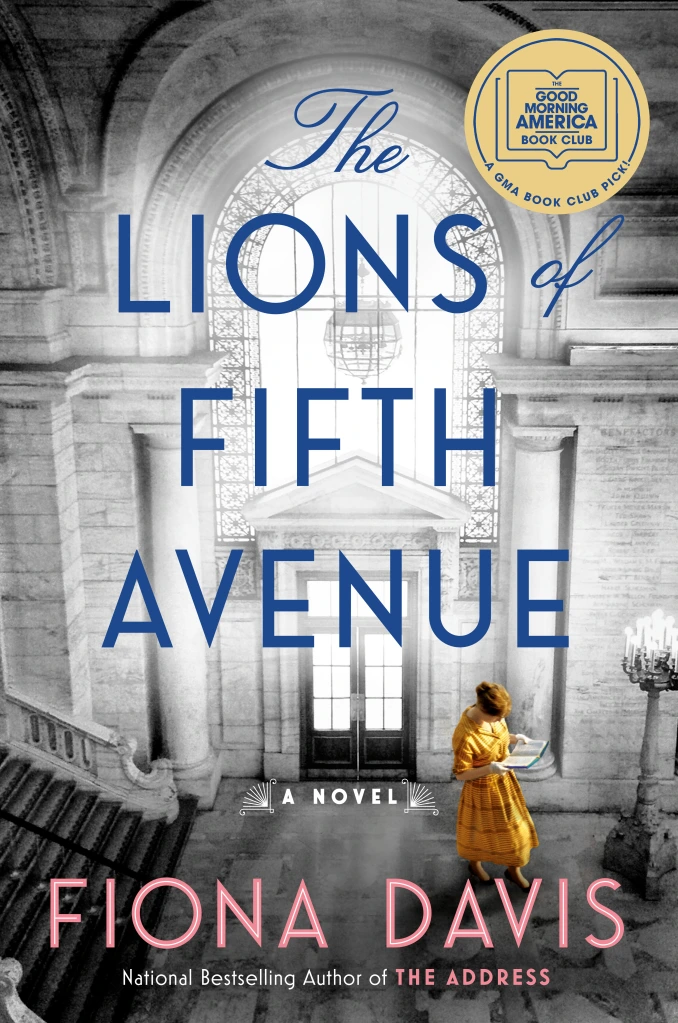This historical fiction novel has two timelines: one in 1913-14 New York City and one in 1993 New York City. In 1913, Laura Lyons lives with her husband Jack, her son Henry, and her daughter Pearl above the New York City Public Library where Jack works. Though she cares about her children and her husband, Laura finds herself wanting more out of her life. She pursues a degree at Columbia University’s journalism school even though her professors won’t let female students write about serious topics.
In 1993, Sadie Donovan works as the curator for the New York Public Library’s Berg Collection. The Berg Collection consists of rare manuscripts and other items that belonged to famous authors. Sadie is Laura Lyons’s granddaughter but her mother Pearl never talks about living at the library. Through Sadie we learn that her grandmother became a famous essayist, and Sadie is looking for more material on Laura Lyons to include in an exhibition of the Berg Collection.
Both timelines have a string of rare book thefts in common. The New York Public Library’s Fifth Avenue location doesn’t lend out books to patrons, so only a few people can access its books at any time.
Fiona Davis introduces the reader to some of the library’s most precious objects through the thefts. During the 1913-14 timeline, a first edition of Walt Whitman’s Leaves of Grass goes missing, along with Tamerlane by Edgar Allan Poe. In 1993, the last volume of Virginia Woolf’s diaries as well as a first edition of The Scarlet Letter by Nathaniel Hawthorne disappear.
As the mystery behind the thefts continues, Fiona Davis shows what it meant to be an independent woman in 1913 and in 1993.
A friend encourages Laura to join the Heterodoxy Club, a real women’s club that met every other week in Greenwich Village. The club embraced some ideas that were radical for the time, such as access to birth control for women. Laura notes that the women’s “stories were so varied, the family origins fascinating…yet somehow they’d all ended up in this one place, united not for a common cause, but simply to be able to speak their minds freely without the disapproval of husbands and fathers.” Laura has to decide how she will balance her desire for independence with the responsibilities of having a family.
Sadie is living the independent life that Laura dreams of. Instead of her husband working at the library, Sadie holds the prestigious position of curator of the Berg Collection. She is divorced with no children, though she has a beloved niece. She has more free time than Laura to devote to the library thefts and works with a private investigator to try and recover the lost items.
Although the dual timeline has been somewhat overdone in recent historical novels, it felt natural for Laura and Sadie’s stories to be connected because they were close family members. Much of the book is difficult to discuss without spoilers. The mystery of the thefts was well done, especially since Davis is not a mystery writer. Some of the characters’ actions, particularly in the Laura Lyons timeline, felt sudden. Certain topics like suicide should be treated with more care or not included at all.
My favorite parts of the book centered around the New York City Public Library’s books and other rare objects. While the author’s note makes it clear that Laura Lyons and her family are fictional, the Berg Collection is real. I highly recommend looking up the collection online. I’ve included more information about the collection and a video of its rare objects below.
Overall, I enjoyed The Lions of Fifth Avenue and will likely read more books by Fiona Davis.
https://www.newyorker.com/video/watch/the-odd-objects-found-in-a-public-library
https://www.nypl.org/about/divisions/berg-collection-english-and-american-literature

